|
Updated Jan. 9, 2021 The third article in our series "Choosing a Vintage SLR System" takes on the Nikon F-mount, arguably the most well-known, and definitely the longest-lived of all the 35mm SLR bayonet systems. After a brief introduction, we will break down our overview in this format: 1) Lenses, 2) Bodies, 3) Flash, 4) Accessories, 5) Reliability & Servicing. Nippon Kogaku (Nikon) began to build their reputation in the early 1950's as one of the premier Japanese optics manufacturers. Fortune and Life magazine photographers Horace Bristol and David Douglas Duncan were working in Japan and they were introduced to Nikkor lenses for the Leica M39-mount and Contax cameras then favored by photojournalists. Within a few years, Nikon introduced their famed S-mount series of rangefinder cameras that set new standards for rugged reliability. With the success of the Asahi Pentax SLR of 1957, Nikon found itself at a crossroads, with two management factions forming: one wanting to stick with rangefinders, and the other pushing for SLR development. Eventually (and fortunately for Nikon) the SLR project went ahead, drawing much from the SP rangefinder design. The result was the Nikon F of 1959, a professional-oriented machine. A whole line of Auto-Nikkor lenses underwent rapid development in the early '60s, giving Nikon one of the most extensive offerings of the early Big 4 (Canon, Minolta, and Pentax were the other companies). Nikon also developed a large assortment of accessories to increase the performance and versatility of the F: interchangeable finders, focusing screens, motor drives, etc. Throughout the 1960s and '70s, Nikon solidified its reputation as the first choice of photojournalists and widened its scope to include advanced amateurs, and by 1979, to the average consumer. By the early '80s, they had risen to second place in overall sales among the now-Big 5 (Olympus had elbowed its way in during the mid-'70s). That would be the high-water mark for the Nikon manual focus system (and all other MF systems), although Nikon would continue to produce MF bodies and lenses into the 21st century, which was longer than any other major Japanese manufacturer. So let's get going with Nikon.
2 Comments
Updated June 30, 2021 Welcome to our second system overview, this time featuring the Canon FL/FD system, in our "Choosing a Vintage SLR System" series. Following a brief introduction we will break things down via the format of 1) Lenses, 2) Bodies, 3) Flash, 4) Accessories, and 5) Reliability & Servicing. Canon was an early entrant into the SLR market in 1959 (the same year as Nikon) with its Canonflex model in what it called the R-mount. Compared to its competitors Asahi Optical Co. (Pentax), Chiyoda Kogaku (Minolta), and Nippon Kogaku (Nikon), Canon got off to a slower start in SLRs as far as sales went. This was due to a couple of factors: 1) Canon remained focused on the rangefinder market as the others went pretty much all-in on SLRs, and 2) the Flex and its immediate descendants the RP, and R2000 were quirky machines with a bottom plate-mounted film advance trigger which was rangefinder-derived. The R-mount, with its breech lock lens coupling, did serve as the basis for the succeeding FL and FD mounts, although it used different internal controls for aperture functions. With the final R-mount camera, the heavyweight RM (1962), Canon went more mainstream with the control configuration and it was their first SLR with a built-in meter. They still remained fourth in sales, however, because they trailed the other three manufacturers in camera/lens automation. Updated Jan. 26, 2021 Welcome to the first system overview in our "Choosing a Vintage SLR System" series! We will proceed through the Big 5 Japanese SLR makers, first looking at manual focus (MF) systems and then auto focus (AF). We will now take an in-depth look at the manual focus "mind of Minolta". Following a brief introduction we will use our usual format of 1) Lenses, 2) Bodies, 3) Flash, 4) Accessories, 5) Reliability & Servicing to break things down. Minolta was the second major Japanese manufacturer to offer a pentaprism SLR with an instant-return mirror behind Asahi Optical Company and their Pentax (1957) model. They introduced their SR & Auto Rokkor (the "auto" stood for the automatic opening/closing of the lens diaphragm) lenses and the SR-2 camera body in 1958. Minolta quickly became the sales leader among the SLR makers and dominated the amateur market in the early 1960's. There was a strong engineering mindset at Minolta and they were not afraid to innovate throughout the next four decades. Various attempts to break into the professional market over the years always seemed to fail market-wise, but Minolta's attempts served to push the boundaries of what a professional SLR could be. The amateur market seemed to be the place where Minolta found its sweet spot. Minolta was also one of the two major manufacturers that made their own glass (the other was Nikon) for their lenses, thus exercising control over the entire lens-making process. Sadly, by 2006, strategic missteps brought about the end of Minolta as a major player in the SLR world, with the camera division being sold to Sony. But there are still treasures to be found in the old Minolta Mine. Let's get digging! System - a group or combination of...interacting elements forming a collective entity Collins English Dictionary Having the concept of "system" clearly in mind goes a long way in making a good choice of any SLR, whether it's vintage film or a brand new digital setup. The camera body on its own, sophisticated as it may be, is of no use without lenses. Other accessories - such as flash units, motor drives, and multi-function backs - increase the capability and versatility of the SLR. Oftentimes, we get caught up in the brand name, appearance, and/or specifications of the SLR body, to the neglect of the rest of the system which will play such a critical role in our photography. The vintage SLR user is spoiled for choice when it comes to selecting a system. We have the Big 5 - Canon, Minolta, Nikon, Olympus, and Pentax - along with a smattering of smaller but still-capable candidates like Contax/Yashica, Fujica, Konica, and Topcon, among others. Which system best fits your needs and wants is obviously a personal decision. How to help you to identify and prioritize your needs is the objective of this article. It will be followed by a series of system overviews for each member of the Big 5. Updated Aug. 30, 2021 In 1962, Nikon decided to take the plunge into the amateur enthusiast SLR market with a new model, the Nikkorex F. From 1959 to this point, they only had the solitary, professional-oriented, Nikon F in their SLR lineup. The price of the F put it out of reach of the average 35mm photo enthusiast. In the meantime, Minolta and Pentax were cleaning up in the sales department in the amateur market, with Pentax having approximately four times and Minolta ten times the overall sales of Nikon in the whole interchangeable lens SLR market in 1962. This would prove to be a very consequential decision by Nikon, one that would impact their growth for decades to come. And not just in camera body sales. However, the Nikkorex F would fail to achieve Nikon's goal of successfully breaking into the enthusiast market. So it was back to the old drawing board... Updated Oct. 17, 2023 With the longest-lived current 35mm SLR bayonet-mount (introduced in 1959), Nikon has a vast catalog of manual focus lenses in a sometimes dizzying array of variations. This can make choosing the right one for you seem daunting. Hopefully, we can help you to find the most suitable candidates for your Nikon lens (Nikkor) arsenal. In our first Nikkor article, we looked at the best bargains in single focal length (prime) lenses. In this follow-up we will attempt to peruse the bargain bin for zoom lenses. "Bargain" is relative in this case to other Nikkors in the same general focal length range ;-). Nikkors generally have higher prices than other Japanese brands of vintage glass because the mount is still current and because of Nikon's reputation as the "choice of pros" over a period of many decades. The mid-1970s were a time of major transition in the SLR industry. The biggest changes involved the downsizing of camera bodies (initiated by Olympus), the general electrification and computerization of many functions (most notably with the Canon AE-1), and the inevitable de-contenting and cost-cutting that came with increased competition between all manufacturers for market share. Perhaps no series of SLRs demonstrated being caught in this no-man's land more than the first three models Pentax released with its brand-new K-mount bayonet in 1975. Two models would survive only two years, the third only five. Yet, ironically, the fourth model, introduced in 1976, would go on to be one of the most successful and iconic of all SLRs and would be in production for over 20 years. Fortunately for vintage camera lovers, any of these K-series SLRs can still be enjoyed and are serviceable even today. So let's take a look at the tragic trio of the KM, KX, K2, and the student camera extraordinaire, the K1000. In their never-ending quest to automate the operation of the SLR, the Japanese manufacturers first targeted auto exposure in the mid-1960s. Auto exposure (AE) initially meant that the photographer had only to set one exposure parameter (shutter speed or aperture) and the camera would automatically set the other. What became known as "shutter priority" (with the user setting the shutter speed and the camera choosing the complementary aperture), was the first AE mode to appear in cameras. It was the easiest to design and could be completely mechanical (no electronic controls) in operation. Konica (one of the smaller and more innovative SLR makers) was the first company to market a practical focal-plane shutter-priority SLR. Nikon began AE research & development in late 1964. It would be five years, though, before they had their first prototype and eight years before they brought an AE-capable SLR to market. So what took so long?
"Endling" - an individual that is the last of its species. -The journal Nature- Updated Feb. 6, 2021 Meet the last great manual focus Minolta...the XD (XD 11 in North America/XD 7 in Europe). Steady on, now! Wasn't the X-700 (1981) an award-winning camera with a more extensive and capable system of accessories?! Yes...yes it was, and it sold very well (2.1 million copies versus 750,000 XDs)...and lived a much longer life...and it has TTL flash...and a real motor drive...yadda, yadda, yadda. Just pick up an example of each and stroke the film advance lever. Case closed. Well, not really closed...I'm just getting warmed up ;-). Now the objective of this article is not to denigrate the X-700. (That would be rather unappreciative, seeing as it was my first real camera, it got me hooked on photography, and it is a good camera.) But a funny thing happened when I was looking for a backup body, back in 2000. I chanced upon a black XD 11 at my local pusher...I mean camera store, and for $50 less than I had paid for the X-700! Fast forward 16 years, and the 11 is still with me while the X-700 was sent down the road a few years back. Why? Updated Oct. 17, 2023 With the longest-lived 35mm SLR bayonet-mount (1959-), Nikon has a vast catalog of manual focus F-mount lenses in a sometimes dizzying array of variations. This can make choosing the right one for you seem daunting. Hopefully, we can help you to find the most suitable candidates for your Nikon lens (Nikkor) arsenal. In this first article, we will search out the best bargains in single focal length (prime) lenses. "Bargain" is relative in this case to other Nikkors in the same focal length ;-). Nikkors generally have higher prices than other brands of vintage glass because the mount is still current and because of Nikon's reputation as the "choice of pros" over a period of many decades. Updated Oct. 17, 2023
Minolta was one of the early players in the SLR market with the introduction of their SR-mount in 1958, only a year behind Asahi Optical Company's Pentax (which used the existing Praktica M42 screwmount), and a year ahead of the Nikon F-mount. More commonly known as the MD mount (which is really the designation of the fourth-generation lenses) the SR was a very advanced bayonet design for 1958 that required no internal changes for its 40+ year lifespan and thus avoided the compatibility problems suffered by most other concurrent mounts as they had to modernize or adopt completely new designs to offer auto-exposure capability and other new features. In 1985, when Minolta introduced its new Alpha (A) mount which permitted auto focus, the SR-mount was not immediately discontinued, but it was the beginning of the end, and by the mid-2000s it was an orphan. Which means great things for the bargain hunter. Orphaned mounts are in lower demand, generally, and therefore, it is less expensive to obtain lenses and accessories for them. Minolta glass is of excellent optical and build quality and equally at home on classic film SLRs or adapted for modern mirrorless digital cameras. So let's take a look at some of the best bargains around in vintage Minolta lenses. This is the first installment of our Best Bargain Lenses series in which we attempt to sift out the truly best-bangs-for-your-buck in the legacy lens world. We are starting with the Pentax K-mount (bayonet) because of increased interest in vintage Pentax glass since the release of the new K-1 full-frame (35mm format) DSLR. You will find that most bargains lie in the focal lengths between 28 to 200mm and at moderate apertures (e.g. f/3.5 or f/4 for wide angles and telephotos and f/1.7 to f/2 for normal lenses). The beauty of these unassuming optics goes beyond their low prices; because of their smaller maximum apertures they were able to use simpler (most of the time) optical constructions, which saved weight and bulk and yet gave excellent performance. So let's start the party with the original series of Pentax K-mount lenses: the SMC Pentax models which were manufactured from 1975 to 1977 (offering the best build quality before cost-cutting entered the picture with the M- & A-series). As we go through we will consider each lens in context with its predecessor in M42 screwmount and successor in SMC-M. Prices are current as of 2016 and are an average cost for lenses in very good to excellent condition. Updated May 20, 2021 $250 - $350 USD. That's what it takes to have one of these beauties for your own nowadays (2020). For those of us who couldn't afford to own a pro-level camera back when the F3 & F4 were current, now is a golden opportunity to obtain a little slice of photographic history that is as usable as ever. If you have ever picked up one after holding a consumer-level body, there is simply no comparison (Yeah, they are that solid & heavy! Especially the F4! :-)). Even with F3 values rising again (and at a faster rate than the F4's), it still comes down to the attributes most important to you, the individual photographer, when making a choice between the two (if you can't have both, that is ;-)). It is the objective of this article to clearly delineate the differences between the F3 and F4 that could influence your decision-making process. So here we go... 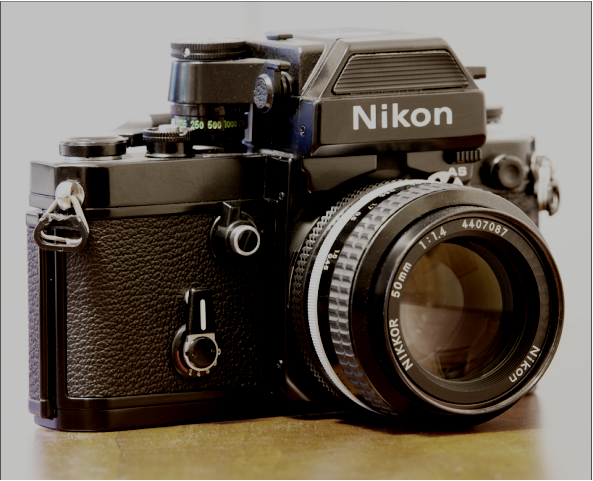 Nikon F2AS w/ DP-12 Finder Nikon F2AS w/ DP-12 Finder Updated Aug. 30, 2021 When Nikon introduced the F2 in the autumn of 1971, its predecessor, the Nikon F, was still in high demand. In fact, 1970 had seen the highest ever level of production for the F, with over 100,000 units made. Nikon had intended to cease F production with the deployment of the F2, but demand for the F proved so great that two years elapsed before they were able to discontinue it for good. That is quite a testament to the popularity of the F and is also indicative of the tendency of professional photographers to stick with what is familiar and trusted. A similar thing had happened with the F itself when Nikon wanted to cease production of its rangefinders in 1959. Demand by photographers doubtful of the newfangled SLR and comfortable with their rangefinder cameras caused Nikon to keep them in limited production until 1965. Now history was repeating itself. So how could the F2 possibly compete with its already legendary forebear? By being a better camera, that's how. How much better? Let's find out... 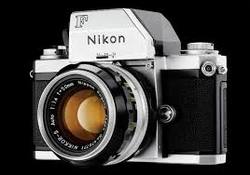 Nikon F w/ 50mm f/1.4 Auto Nikkor Nikon F w/ 50mm f/1.4 Auto Nikkor Updated July 25, 2019 Nikon has been in the SLR business since 1959. Which means there are plenty of choices as far as selecting a vintage camera body goes. Nikon initially marketed mostly to professionals. But in 1962 they entered the amateur market as well, and by 1979 they had three descending tiers: professional, enthusiast, and consumer which they maintain even today. Let's kick it off with the granddaddy of them all...the SLR that put Nikon on the map. 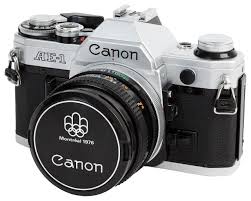 1976 Olympic Edition Canon AE-1 1976 Olympic Edition Canon AE-1 1976. A watershed moment in the history of the SLR (single-lens-reflex) camera. The year when, depending on your point of view, camera design and manufacturing quality began its slide into a pit of oblivion, or ushered in a new era of affordability and convenience, opening the doors of SLRdom to a whole new audience. Or maybe, like me, you can feel a bit of both ;-). Either way, the camera responsible is none other than the Canon AE-1, the best-selling film SLR of all time. To appreciate the impact that the AE-1 had on 35mm photography, it serves us well to remember the context of its arrival and subsequent domination of the market. Prior to the AE-1, SLRs had been the choice of professionals (particularly photojournalists) and enthusiasts, people who were not interested just in snapshots, but in the craft and art of photography. Having control over the different parameters of exposure was very high on their list of priorities and the SLR gave them that, as well as access to a wide variety of lenses and accessories. For the average consumer, whose top priorities are convenience and affordability, that was waayy too much camera for waaayyy too much money! Thus the conundrum Canon was facing by 1974: a small, nearly-saturated enthusiast SLR market versus a huge consumer (mass) market that up to this point was untouchable for reasons of cost and convenience. What could be done?
|
C.J. OdenbachSuffers from a quarter-century and counting film and manual focus SLR addiction. Has recently expanded into 1980's AF point and shoots, and (gack!) '90s SLRs. He even mixes in some digital. Definitely a sick man. Categories
All
Archives
March 2024
|

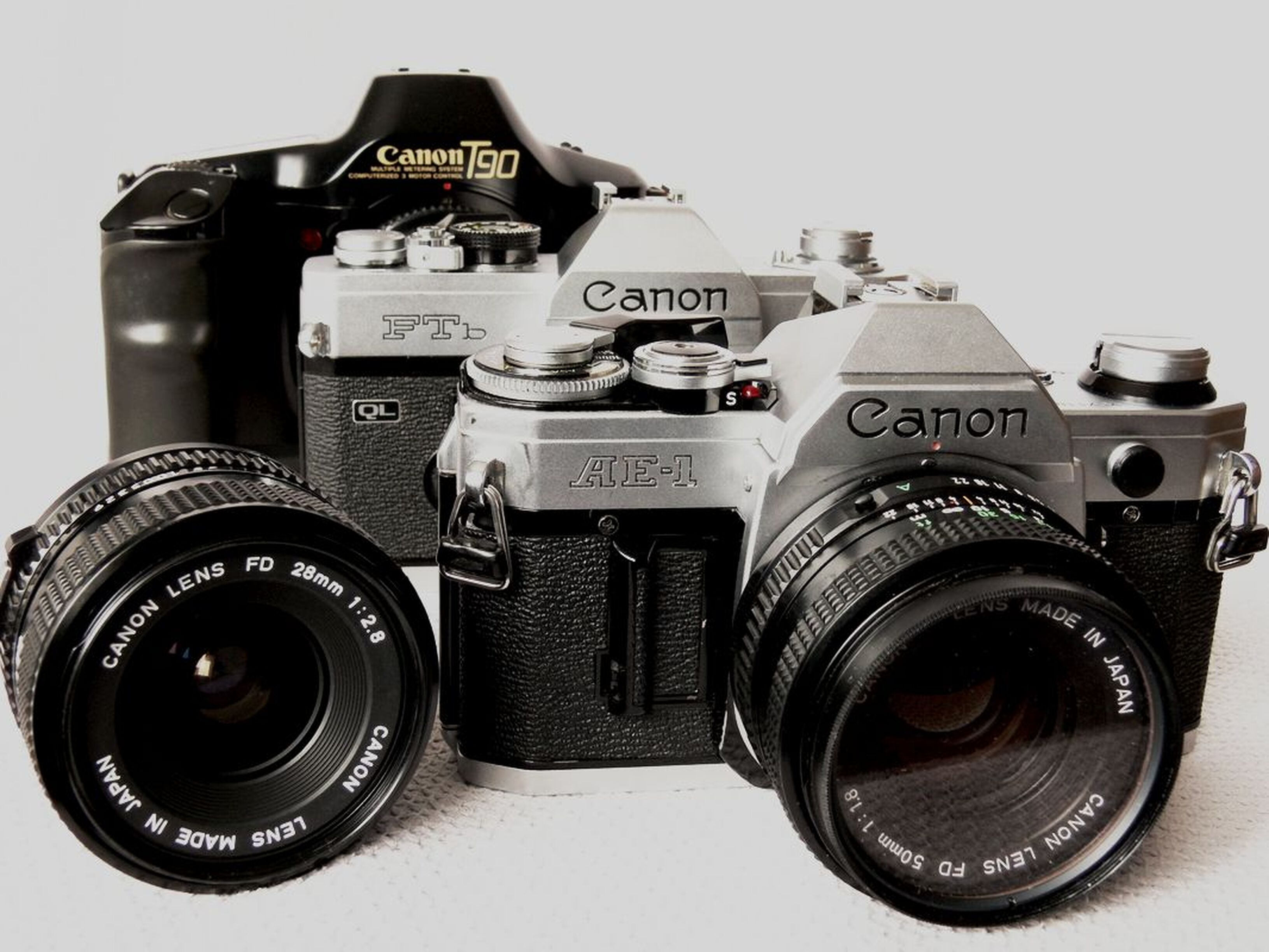
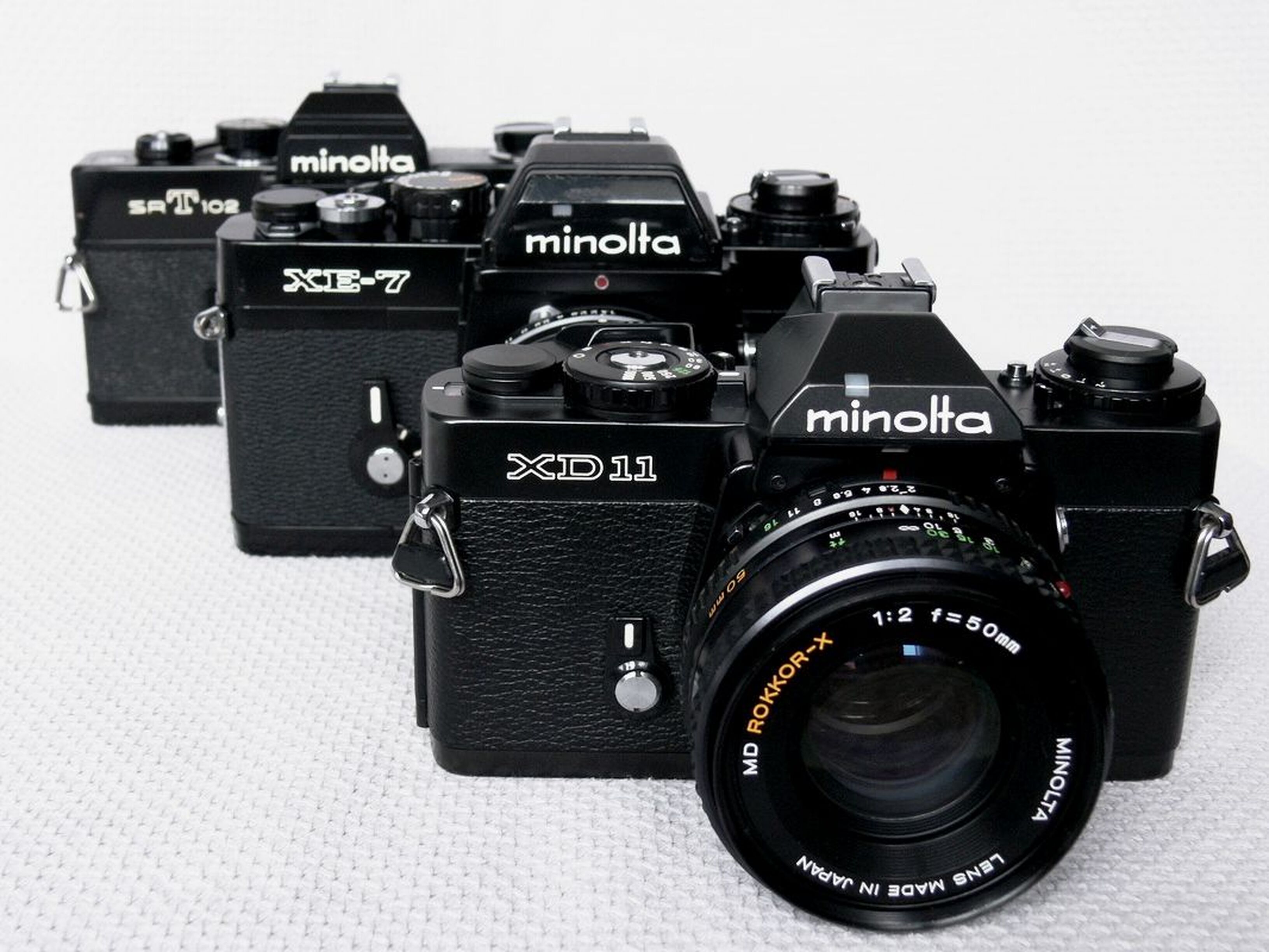
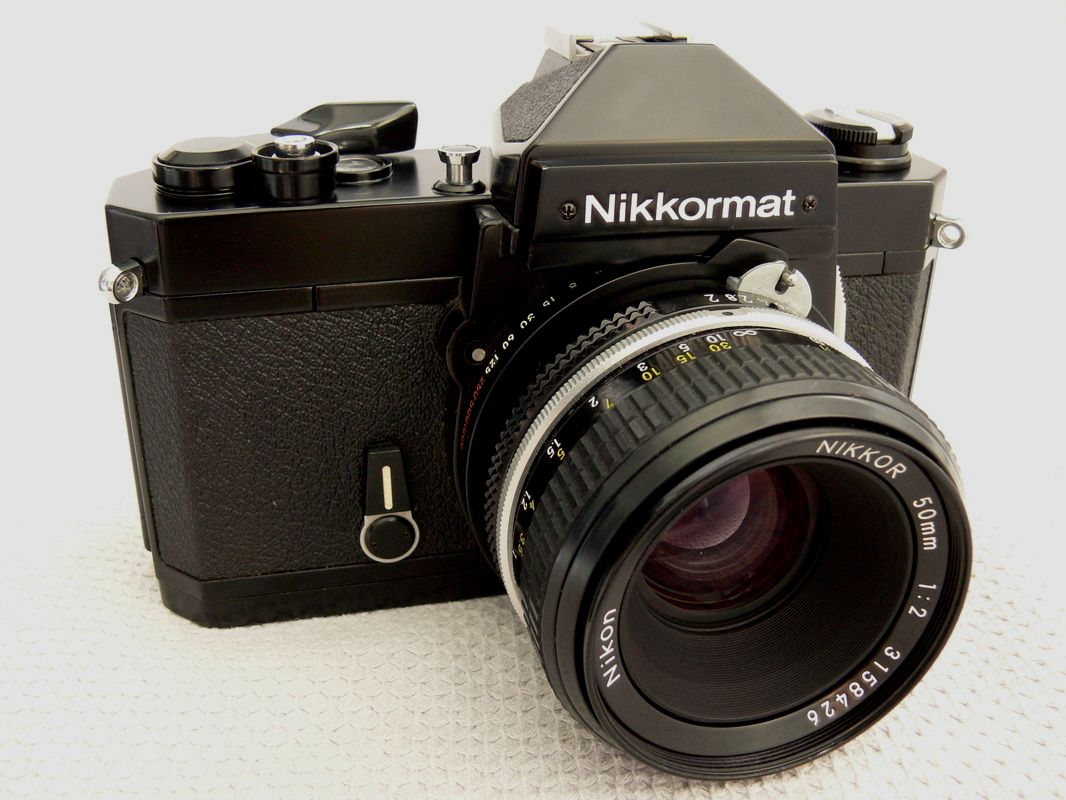
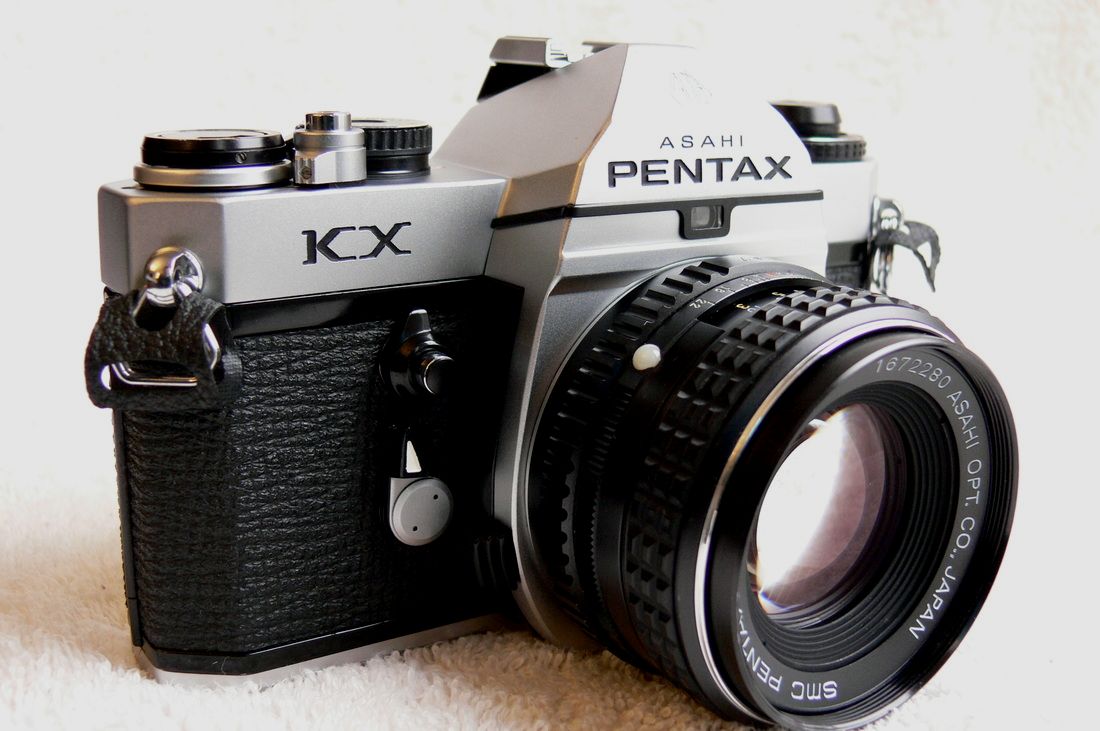
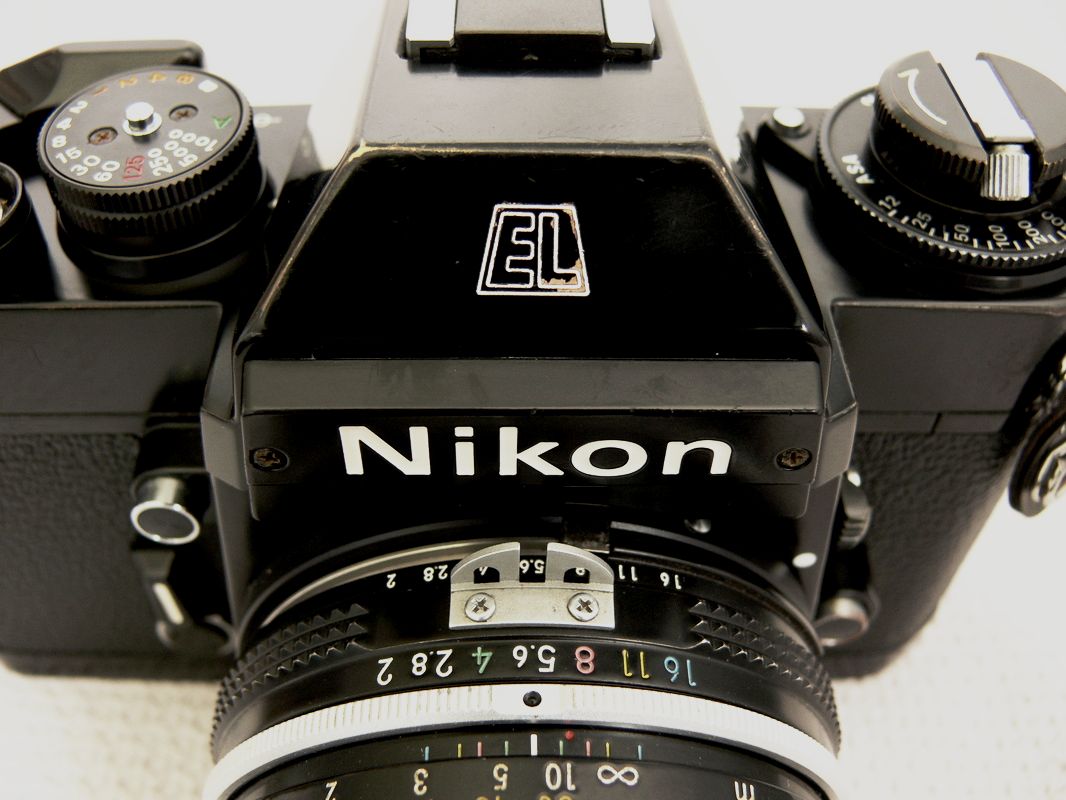
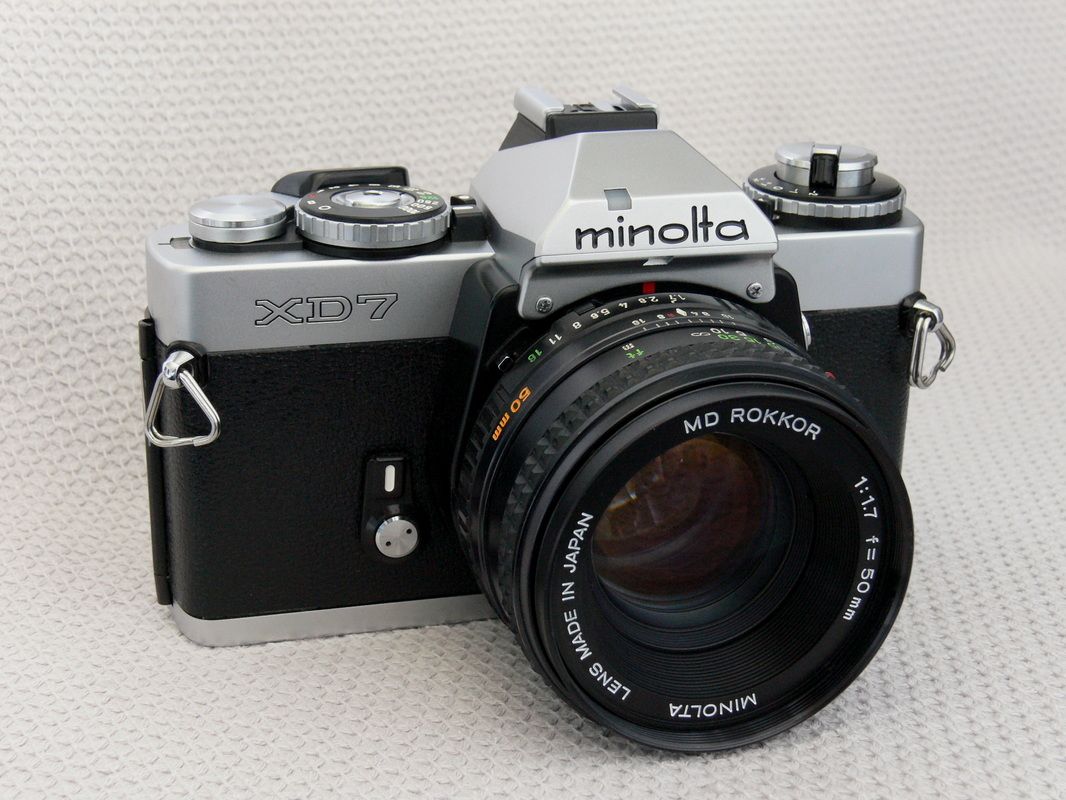
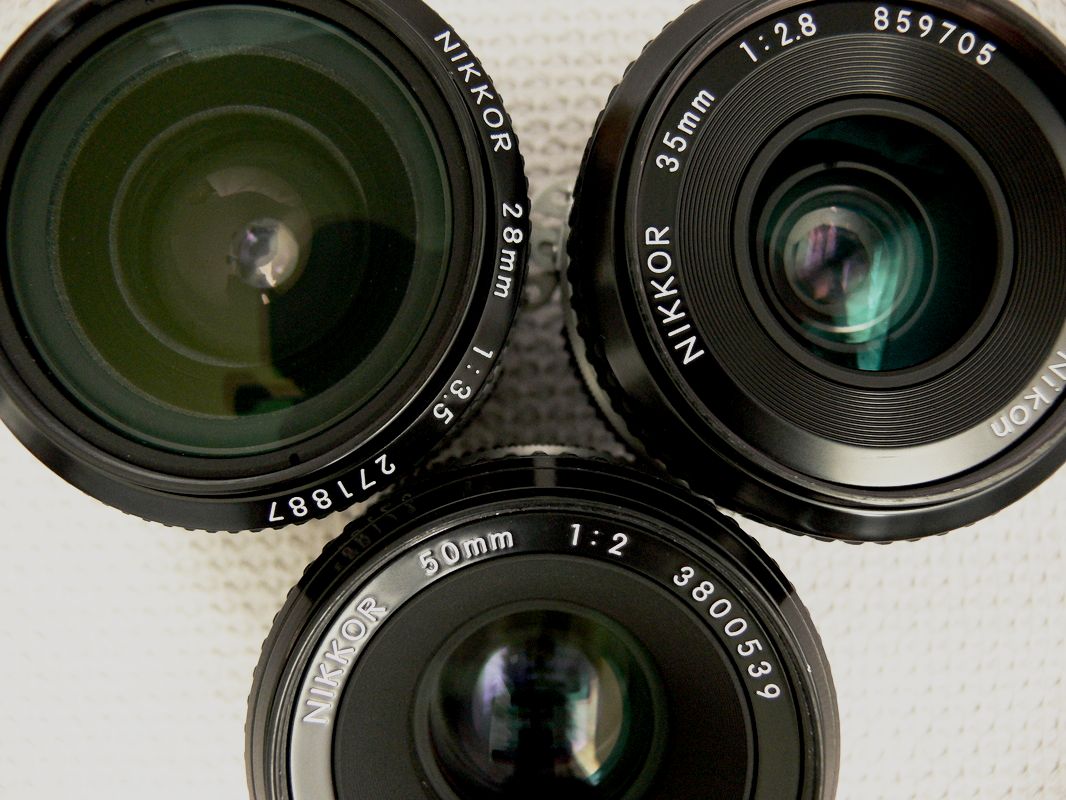
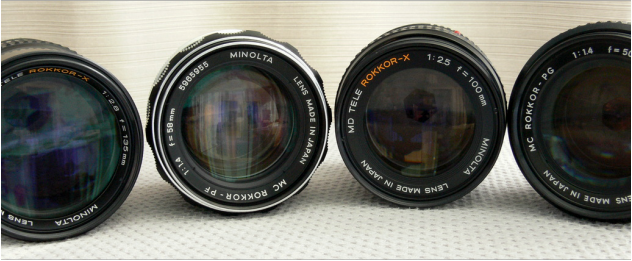
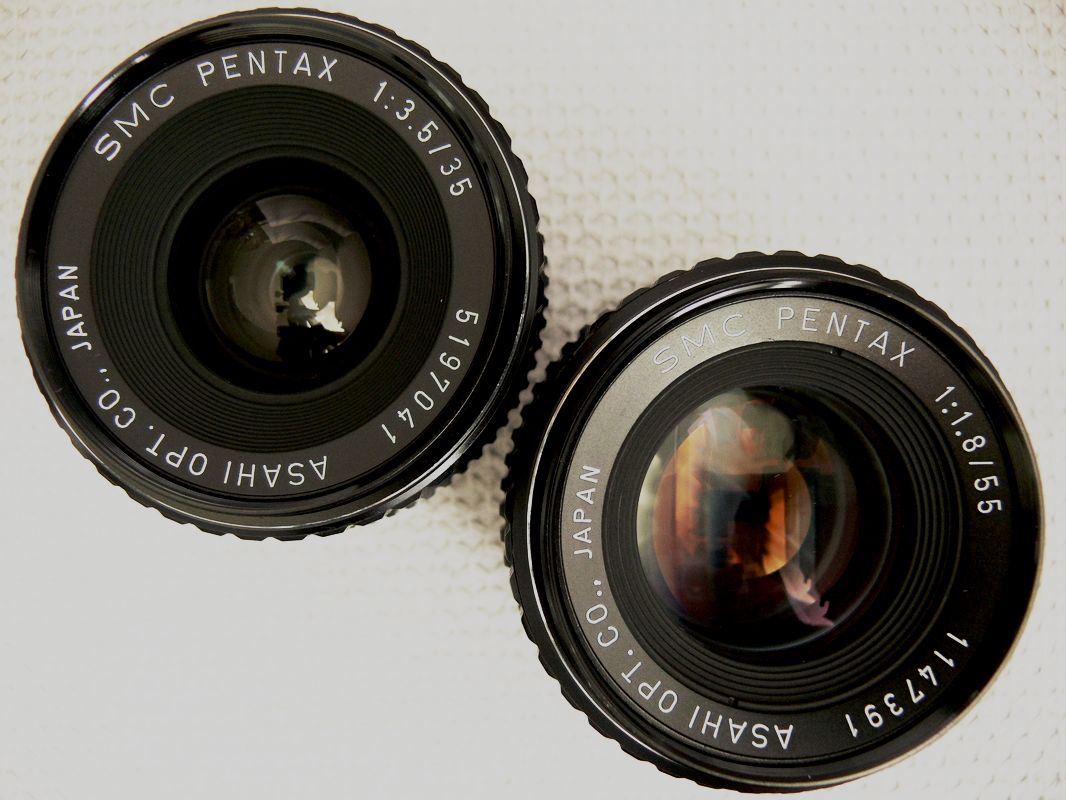
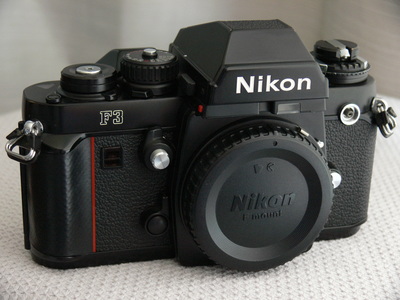
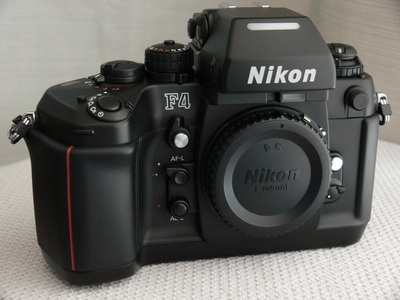
 RSS Feed
RSS Feed